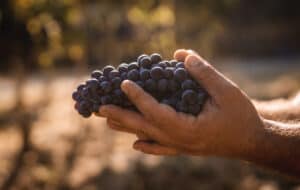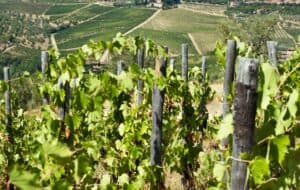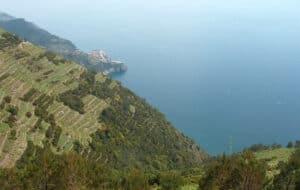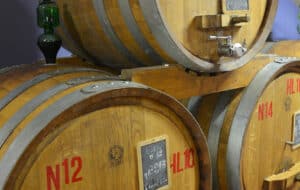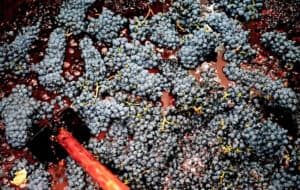Italy has more than 500 indigenous red and white grape varieties and is, by far, the country with the highest number of wines produced in the world per year.
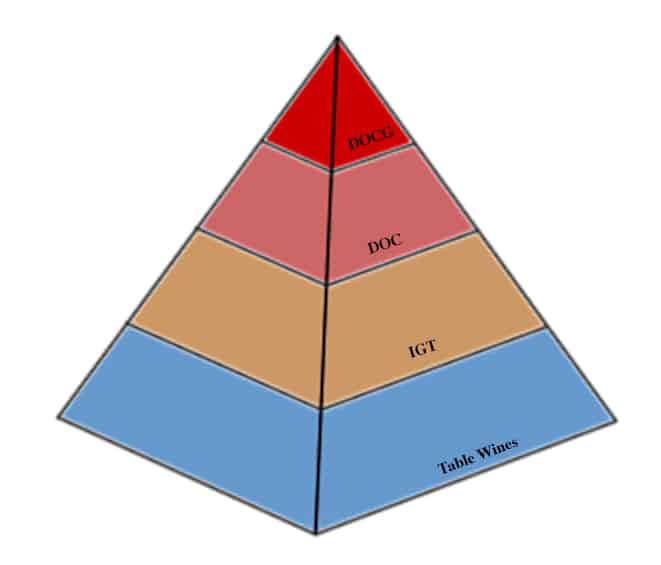
The great variety of wines is due to the evolution of viticulture over the centuries in the different geographical areas of Italy where producers were pushed to select different clones from which new vines were then born as a result of either a particular territory and climate or an economic and quality demand.
These grapes are sometimes only produced in certain areas of Italy. In some cases they have almost completely disappeared while in others they had been totally forgotten for decades and then brought back to life.
The Italian system to organize the different wines is a tool to describe where the wines come from and how they are produced. In this way is possible to create a sort atlas of the Italian “Denominazioni“, the different appellations, and clearly understand the area of production and the rules that the winemakers must follow for the production.
We can imagine a pyramid to visualize the system of the Italian Wine Appellations: at the bottom the most generic wines, the “Vini da Tavola”, the table wines, largely produced; then the Regional wines, the IGT; finally the DOC and DOCG, only produced is specific special areas and in little quantities.
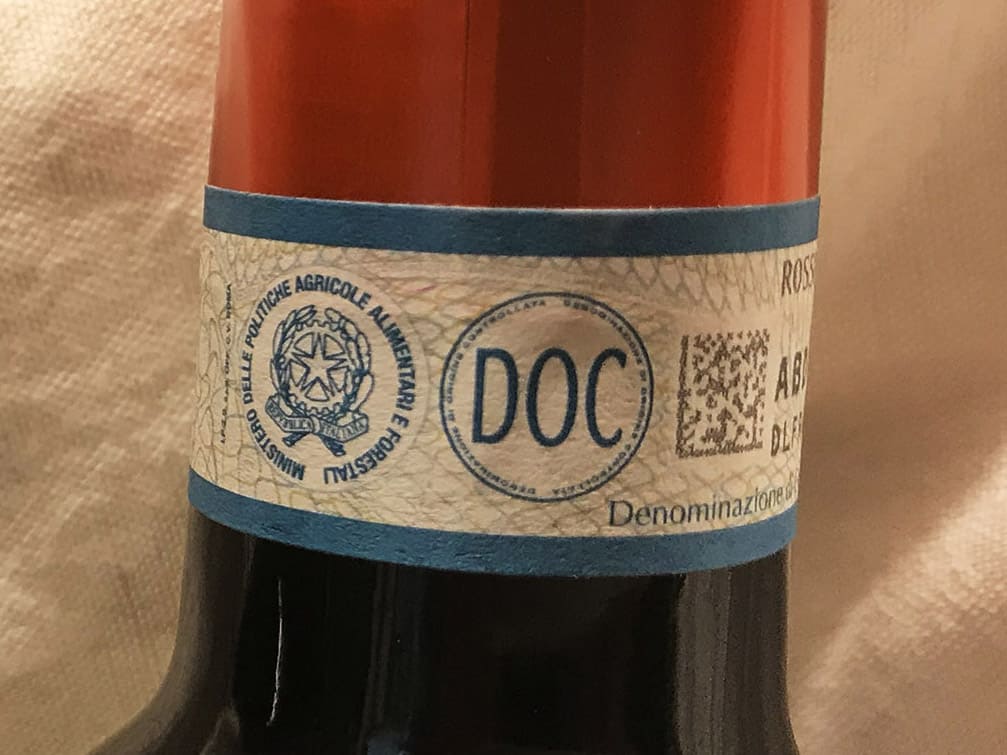
DOC wines
The DOCG (Controlled and Guaranteed Denomination of Origin) mainly differs from the DOC in its quality. DOCG wines are, in fact, at the top of the pyramid of quality wines produced in Italy, and, before being released on the market, the wines must pass a sensory assessment at the Chamber of Commerce of the region where the wine is produced as a certificate of guarantee.
In 1963, the Italian government issued a special decree to establish the wines that could be part of the Italian DOC, and the first two wines to be part of it were the Passito di Pantelleria and Marsala. DOC stands for Controlled Denomination of Origin meaning that the wine can only be produced in a specific area which certifies its origin and is controlled because it is sold with a seal or a numbered label. There are currently 330 DOCs in Italy, but it is a number that is expected to grow rapidly in the coming years. The region with the biggest number of DOCs is Piedmont with 42.
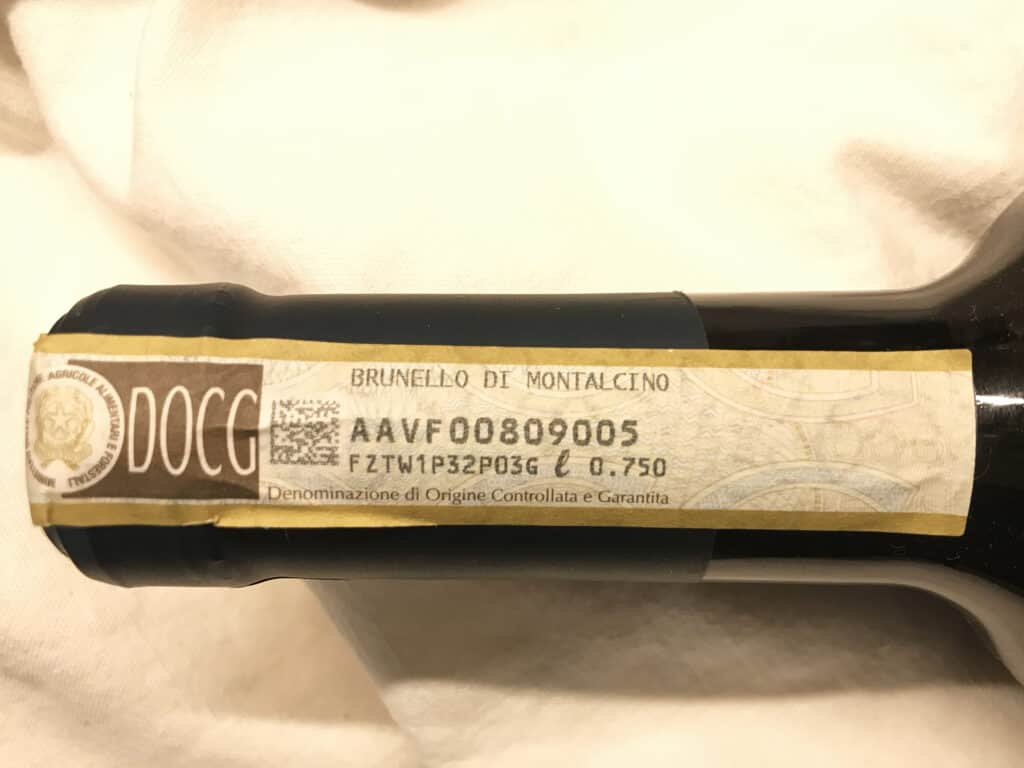
DOCG wines
The first two wines to boast the DOCG in 1980 were Brunello di Montalcino and Vino Nobile di Montepulciano immediately followed by Barolo and Barbaresco. To date, there are 77 DOCG wines among red and white wines, but this number is also destined to grow as many DOC wines that have received this recognition can receive the DOCG after 10 years if certain parameters are respected. The region with the biggest number of wines under appellation is, again, Piedmont with 16 DOCGs.
IGT wines
The base of the quality pyramid is for IGT and generic wines or table wines.
The IGT or Typical Geographical Indication was started in 1992, and it is a very broad denomination in which the most important parameter is that the wine must be produced in a specific region. The most important example is certainly the IGT Toscana which includes all the other wines produced in this region that are not part of the great DOCG or DOC.
IGT doesn’t necessarily mean low or bad quality. In fact, some of the best and most expensive Tuscan wines started as or still are IGT.
Table wine
Table wine or generic wine is certainly the least valuable. Nowadays they are simply called “Vino Rosso” and “Vino Bianco”, red and white whine. It is not regulated like the other denominations, and it is not mandatory to write the vintage of production, the origin, or the grape variety on the label but only the alcohol level and the color.
There is an example, however, that makes us think about the little importance that the denomination of a wine sometimes has. Sassicaia is perhaps the most famous Italian wine produced by a single winery, but it was classified as table wine until 1994.


